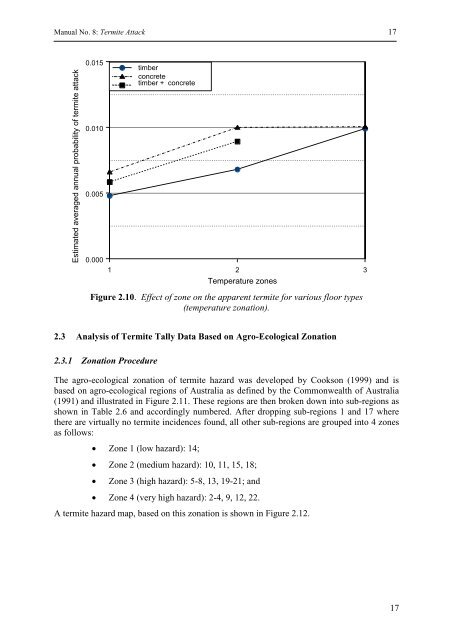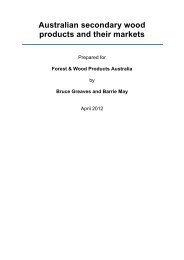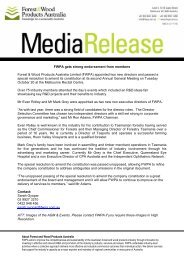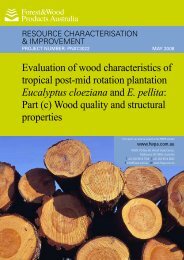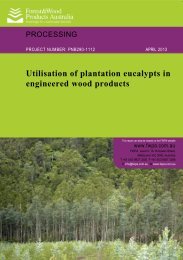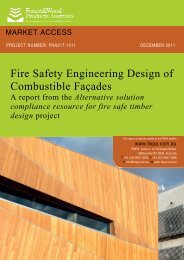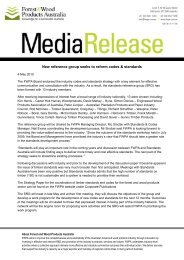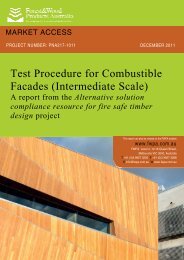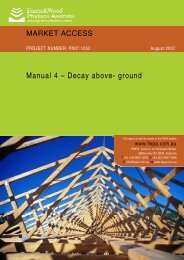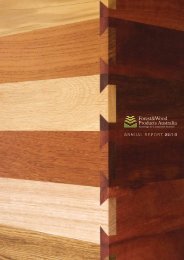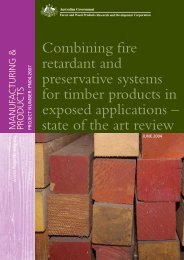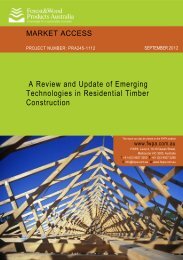MANUAL No - Forest and Wood Products Australia
MANUAL No - Forest and Wood Products Australia
MANUAL No - Forest and Wood Products Australia
You also want an ePaper? Increase the reach of your titles
YUMPU automatically turns print PDFs into web optimized ePapers that Google loves.
Manual <strong>No</strong>. 8: Termite Attack 17<br />
Estimated averaged annual probability of termite attack<br />
0.015<br />
0.010<br />
0.005<br />
0.000<br />
Internal Termite Incidence for Various Floor Types<br />
timber<br />
concrete<br />
timber + concrete<br />
1 2 3<br />
Temperature zones<br />
Figure 2.10. Effect of zone on the apparent termite for various floor types<br />
(temperature zonation).<br />
2.3 Analysis of Termite Tally Data Based on Agro-Ecological Zonation<br />
2.3.1 Zonation Procedure<br />
The agro-ecological zonation of termite hazard was developed by Cookson (1999) <strong>and</strong> is<br />
based on agro-ecological regions of <strong>Australia</strong> as defined by the Commonwealth of <strong>Australia</strong><br />
(1991) <strong>and</strong> illustrated in Figure 2.11. These regions are then broken down into sub-regions as<br />
shown in Table 2.6 <strong>and</strong> accordingly numbered. After dropping sub-regions 1 <strong>and</strong> 17 where<br />
there are virtually no termite incidences found, all other sub-regions are grouped into 4 zones<br />
as follows:<br />
Zone 1 (low hazard): 14;<br />
Zone 2 (medium hazard): 10, 11, 15, 18;<br />
Zone 3 (high hazard): 5-8, 13, 19-21; <strong>and</strong><br />
Zone 4 (very high hazard): 2-4, 9, 12, 22.<br />
A termite hazard map, based on this zonation is shown in Figure 2.12.<br />
17


